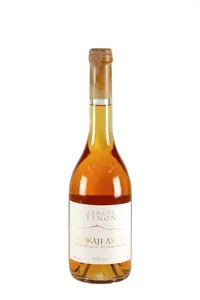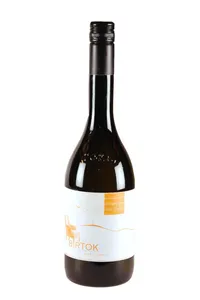Free delivery from Fr. 300 of purchase or 18 bottles, otherwise Fr. 15
Hongrie
Appreciated and recognised for several centuries, Tokaji is undoubtedly one of the oldest sweet wines in the world. - Its reputation - which led Louis XIV to call it "the wine of kings and the king of wines" - precedes that of the great wines of Sauternes by almost two centuries, with a classification that was the first in European history, well before that of 1855 in Bordeaux! Geology There are two types of soil of eruptive origin in Tokaj; mainly volcanic soils as well as loess soils, including that of the famous Mézesmály ("honeycomb") of Tarcal.Grape Varieties Three varieties make up the Tokaji grape variety. Furmint is the main one. Hárslevelü ("lime leaf") is almost always associated with it. Finally, the muscat à petits grains represents about 5% of the vineyard. It is used either as a complement or alone. Other grape varieties also exist, often on an anecdotal basis. Climatology The Tokaj region is located in the north-east of Hungary, not far from the Ukraine, and benefits from a continental climate. The Tokaj hill range, which is situated in the foothills of the Carpathian Mountains, is close to a large, somewhat marshy plain, crossed by two rivers, the Bodrog and the Hernàd. The humidity from this plain very often initiates botrytis, but at the same time it is crossed by winds that also play a very important role in the passerillage phase that often follows botrytis.Vinification The conditions for making Tokaji are among the most complex and mysterious among the sweet wines. Unlike other sweet wines, Tokaji is a blend of a dry white wine, called the base wine, and a sweet wine. The Aszú grapes are picked grain by grain and placed in baskets containing about 25 kg, the so-called puttonyos. These grapes are crushed and added to the dry base wine in 136-litre barrels, called gönci, or in 220-litre barrels called szerednyei. Depending on the desired degree of concentration, 3, 4, 5 or 6 puttonyos are added to this base wine. After maceration, this paste is pressed and then slowly fermented.Maturing Tokaji are matured in casks, except for Eszencia, whose high sugar content literally saturates the wood and dries out the staves, making them permeable. The number of puttonyos determines the length of the maturation period: a 6 puttonyos should be aged for 8 years; however, it should be noted that the legislation is changing on this point.It is an impressive sight to walk through the Tokaji maturation cellars, dug into the foothills of the Zemplén mountain. The atmosphere is purified and humidity regulated by a strange, fluffy, ashy mould - cladosporium cellare - which only grows here.
4 items

Tokaj Aszú Esszencia, Samuel Tinon (50 cl) - 2007
Tokaj
Public price
86,00 CHF

Tokaj Aszú 5 puttonyos, Samuel Tinon (50 cl) - 2016
Tokaj
Public price
Club price
58,00 CHF
52,20 CHF
from 1 bt.
Discount of 10%

Tokaji sec, Megyer (furmint), Samuel Tinon - 2018
Tokaj
Public price
28,00 CHF

Tokaji sec, Birtok, Samuel Tinon - 2021
Tokaj
Public price
19,50 CHF

